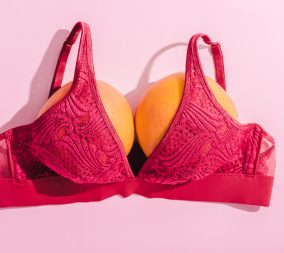As many of you are aware, I have two daughters and at dinner, we were discussing the importance of October as breast cancer awareness month. (Their grandmother had breast cancer.) To my surprise, they brought up #FreetheNip…Well, how could it be that I take care of many women, most of whom have nipples and didn’t know about this movement? But my daughters did…I had to hash it out.
What is it? Is it good for you? How has it affected society? These questions and more will be answered along with some health tips to keep your nips safe and sound! First things first, let’s establish: What is #FreetheNip? #FreetheNip was created based on a Film by Lina Esco. Esco created the film to protest the fact that in 35 different states women can be arrested for going topless while for men it is something that is common, not to mention legal, in everyday life. After the movie aired millions of people took up the “#FreetheNip” challenge. From informative blogs to posting pictures, braless women and men all over the world took up the #FreeTheNip protest. While Esco did not realize it, in her own words “Did I know that topless women and their nipples would be the Trojan horse into launching this whole conversation? No, but it worked”. Overall the lasting impact of #FreeTheNip is still unclear. More widely, the #FreeTheNip movement has evolved to encompass not only the freedom to go topless legally but also the personal freedom to ditch the bra, a constraint felt by many in the movement to add to the sexualization of the female anatomy.
The modern bra was originally created in 1914 when a woman named Caresse Crosby replaced the old-fashioned corset (which had been linked to back and circulation problems) with a handkerchief sewn together with pieces of ribbon. This came as a welcome relief to many women. During this time period corsets were mainly made of metal and women felt persecuted by being forced into this tight contraption for many hours of the day. This new softer “bra” was a welcome relief. Not only did the bra help women, it also helped soldiers on the front lines. The metal that was saved from corsets could go towards things for the war like bullets and armor. (Lucky for the nips there was a war going on!) As time went on the common corset was left in the dust as bras began to be improved upon in ways such as adding wires for support and making multisize versions. Finally, now in 2022, we have the bras we wear today available in all ranges of size, fabric and support options. We’ve come a long way from some string and a handkerchief!
From a personal health standpoint, #FreeTheNip movement is completely safe. Currently, the only risk to women who choose to go braless is in those individuals with a larger bra size who may suffer from back pain if a bra normally helps hold the weight in place. In terms of things like sagging and breast cancer, there is no effect of wearing or not wearing a bra. As a matter of fact, there are many other things impacting breast health that have to do with WEARING a bra. For example, a major cause of pain in the breasts can result from wearing a bra in the wrong size. According to Dr.Cassan Blake MD “A lot of people wear the wrong bra size…When you wear the wrong size, particularly if you’re wearing an underwire bra, that could be painful because the wire isn’t sitting in the proper location. Another thing is that you may gain or lose weight and still wear your favorite bra. By that point, the bra isn’t the right cup size or band length for you any longer.”
So overall it’s up to you. Wear a bra, don’t wear a bra. You should do what makes you feel comfortable and safe in your own body. As far as these doctors are concerned that’s the most important thing.
Now while #FreetheNip may not be dangerous, there is something that is; Breast Cancer. While many put off a mammogram convinced it’s not worth the time out of their day, it has been proven that 87% of mammograms help detect cancer in the early stages. This allows for a faster cure and less invasive treatments. This is why the American College of OBGYN states that women should be tested every 1-2 years and mammograms should be started at the age of 40. Continued screening should happen until at least the age of 75. At the very least, if you do not start getting a mammogram at 40, screening should definitely begin at 50…but 40 is always preferred.
Overall the answer: Go get your mammograms! They may seem like a hassle but it’s always better to be safe than sorry and you never know what might be found. In all, the only danger to you or your nips is not taking the time to check them every year! In terms of wearing a bra, do what makes you feel like you! Wear a bra, don’t wear a bra, it’s a personal decision. Just please make sure you do everything you can to keep your breasts safe.
In the month of October, many of our radiology colleagues provide mammograms free of charge for uninsured or underinsured women. If we can help you access these services, please contact our office.
Written by Dr. Lauren Wheeler


















